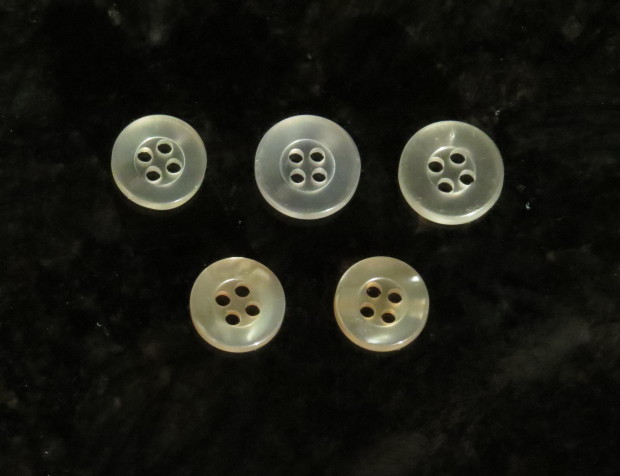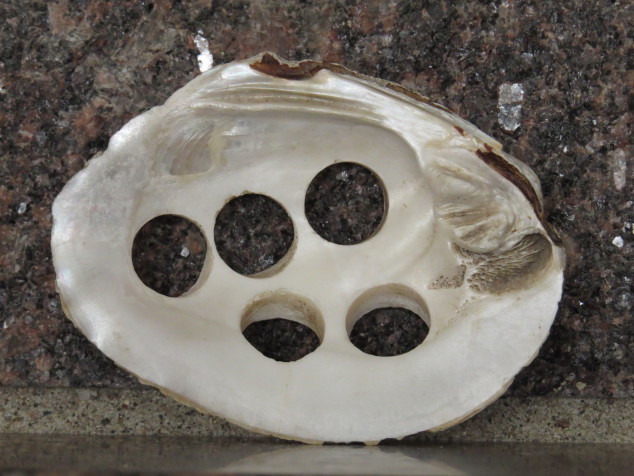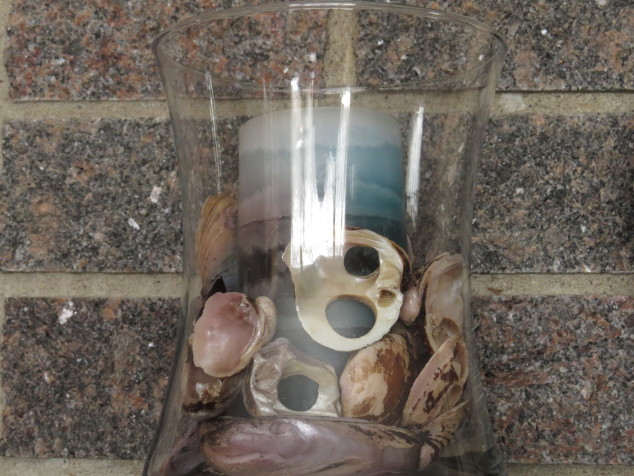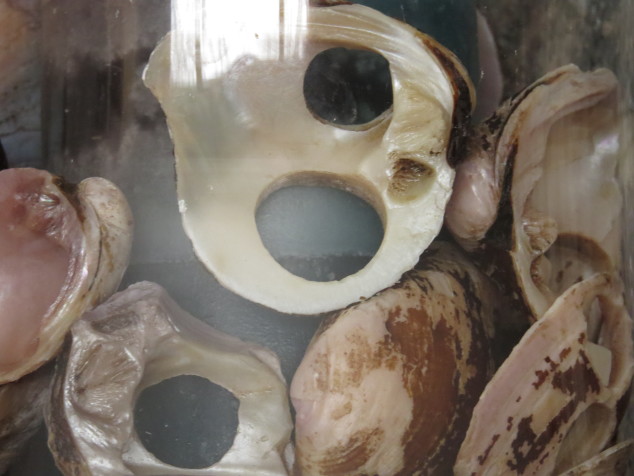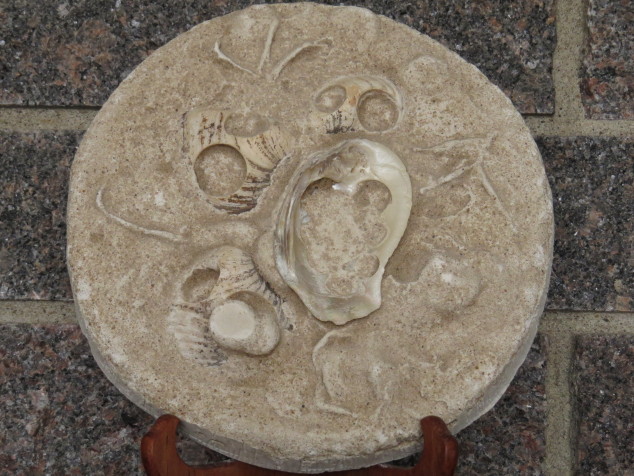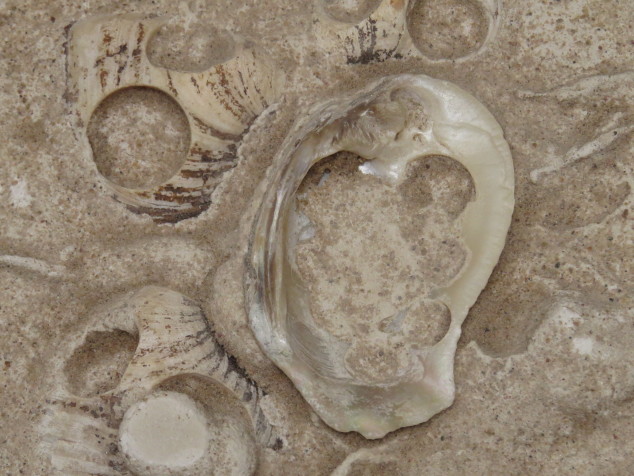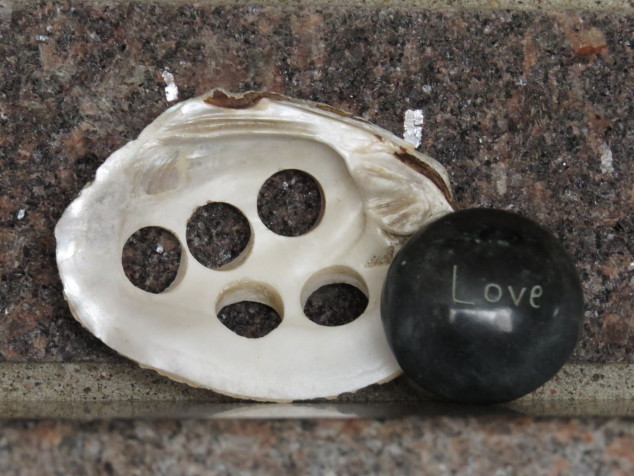A convergence of occurrences led me to writing about pearl buttons. First was the date February 2–Groundhog’s Day to most, but to the Brakes, it is also the wedding anniversary of Chris’ parents. They were married in Chicago in 1944, he in his Army uniform and she in a stylish suit. Doug and Ruth both grew up in Cassville, Wisconsin, a tiny little town nestled between the tree-covered bluffs and the mighty Mississippi River in southwestern Wisconsin. The second occurrence was the fact that it was February in Minnesota, and my outdoor nature ‘opportunities’ were a little bit harder to find. And third, as I was finally putting away Christmas decorations, I came across something that Chris’ Mom had made.
On one of our Brake family reunions at Eagles Roost Resort in Cassville, we took The Pride of Cassville Car Ferry up the Mississippi to the town of Guttenberg, Iowa. The ferry has been running the river since 1833–the oldest operating ferry service in the state of Wisconsin. It connects The Great River Road and the Iowa Great River Road, two National Scenic Byways. We rode the ferry as walk-on passengers for a $2 fare one way. When we disembarked in Guttenberg, we saw an old limestone building beside the River. It was once a button factory. There were huge piles of discarded freshwater mussel shells in the sand between the stone building and the River that had been used to make pearl buttons. So the kids and I collected shells.
Empire Buttonworks opened in 1909–one of four button factories in Guttenberg. The Mississippi River provided a seemingly endless supply of freshwater mussels that were gathered by the clammers using dragging hooks. Mussels were boiled and pried open to remove the meat, then the shells were soaked before cutting buttons from the iridescent layers. Grinding and polishing followed, then the buttons were sewn on to a card. Millions of pearl buttons were made in this one factory during its fifty years of business, and this was just one factory of many along the Mississippi River.
I gave some of my collected shells away to other people, and some I arranged in a hurricane glass with a candle that reminded me of the River.
Long before I became a Brake, Ruth and her kids had collected Guttenberg button shells also. She and Chris took a pie pan, some sand, the shells, and plaster of paris out to the backyard to make a plaque. It was displayed in their living room for many years, reminding them of their River home in Wisconsin. It was passed on to us after they died.
Bringing Nature indoors keeps us connected to the Earth, and in the case of the button shells, connected to a long history of family. An even longer history emerges from the shell button industry–an idea, the abundance of natural resources, work for many people, depletion of those resources, a new idea (buttons from plastic), and so it goes….
I treasure the simple plaque that Chris and his Mom made. I treasure the memories of that ferry-boat ride to Guttenberg with the Brake family and collecting button shells with my kids. I keep the shell with the five holes on the windowsill above the kitchen sink along with a rock carved with Love. It represents our family of five and the prevailing emotion that I tried to bring to all our days together. Perhaps this will be part of a convergence of occurrences that leads someone else to a treasured pearl.
